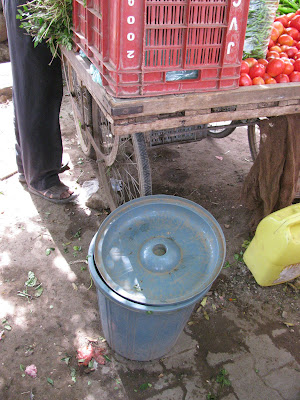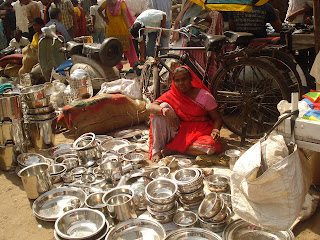How often have we stopped on our way to somewhere to buy something we found selling on the streets? Everyday, I guess. But how many times have we actually acknowledged those hard working street vendors serving us almost everyday.
This blog is an effort to recognize and understand the street hawkers better. We, Swetal and Shipra, students of Product Design at NID, under the guidance of our faculty Praveen Nahar, have taken the initiative to study the system of Street hawking, to be able to enhance the position of these people in society.
Out of the total workforce of India 90% work in the informal sector, out of which 60% are self employed. There are around 1 crore hawkers in India and Ahmedabad itself has around 100,000. Street hawking, besides providing livelihood to a huge percentage of population, is also of utmost convenience to the consumers. It makes required articles readily available and at reasonable price. Street vendors also contribute immensely to the urban economy. A large number of poor populations find it a good means of earning, as it does not require any specific skills, capital and much literacy. It is also beneficial in giving direct market to the small-scale industries.
Since time immemorial, street vending has developed the unique street culture and the true essence on Indian streets.
In order to have a wholistic view we recognized various stakeholders involved in this system, which can be studied in detail so that different perspectives can be understood.






 Vegetable market located in MANSI CHOWK is a daily market. Surrounded by higher and higher middle income group residential societies. It has around 270 hawkers out of which 210 are women hawkers. The market has been developed by AUDA, with advertising rights to Reliance Company. The market is based on the main arterial road, over 30 meters wide. The traffic load on the road is very high and the customers commuting prefer making stoppage and buy vegetables from the market. The market is organized and maintained well by the vendors, for their and customer convenience. Use of stools, shades from sun and electronic weighing machine is done.
Vegetable market located in MANSI CHOWK is a daily market. Surrounded by higher and higher middle income group residential societies. It has around 270 hawkers out of which 210 are women hawkers. The market has been developed by AUDA, with advertising rights to Reliance Company. The market is based on the main arterial road, over 30 meters wide. The traffic load on the road is very high and the customers commuting prefer making stoppage and buy vegetables from the market. The market is organized and maintained well by the vendors, for their and customer convenience. Use of stools, shades from sun and electronic weighing machine is done.


































